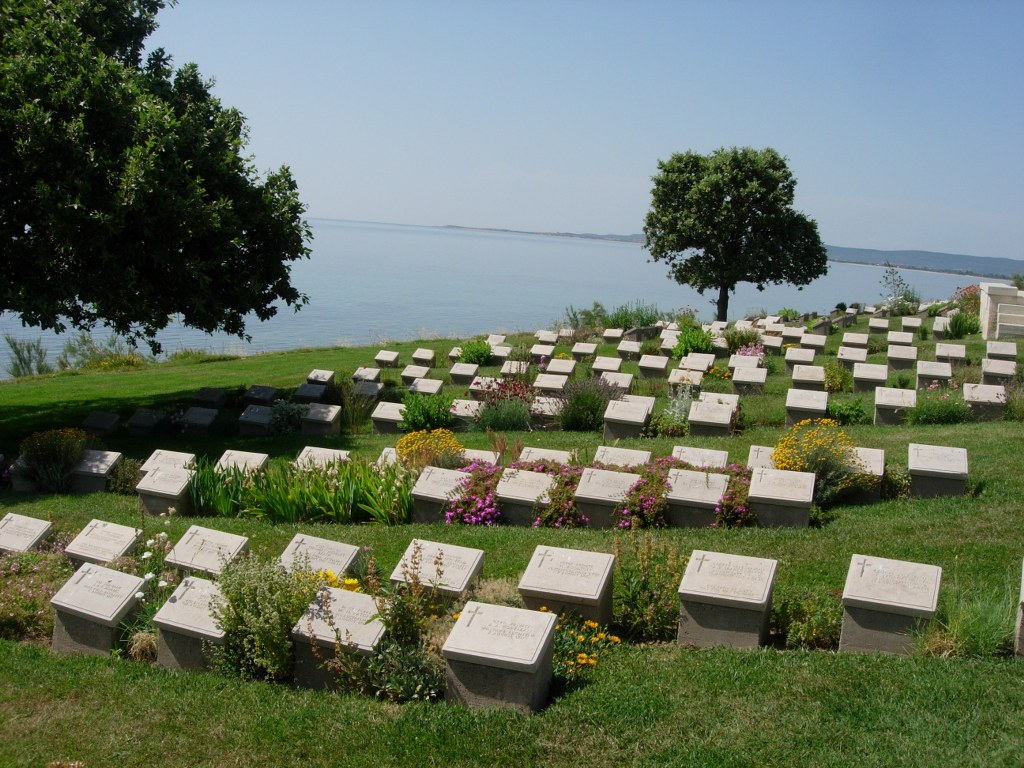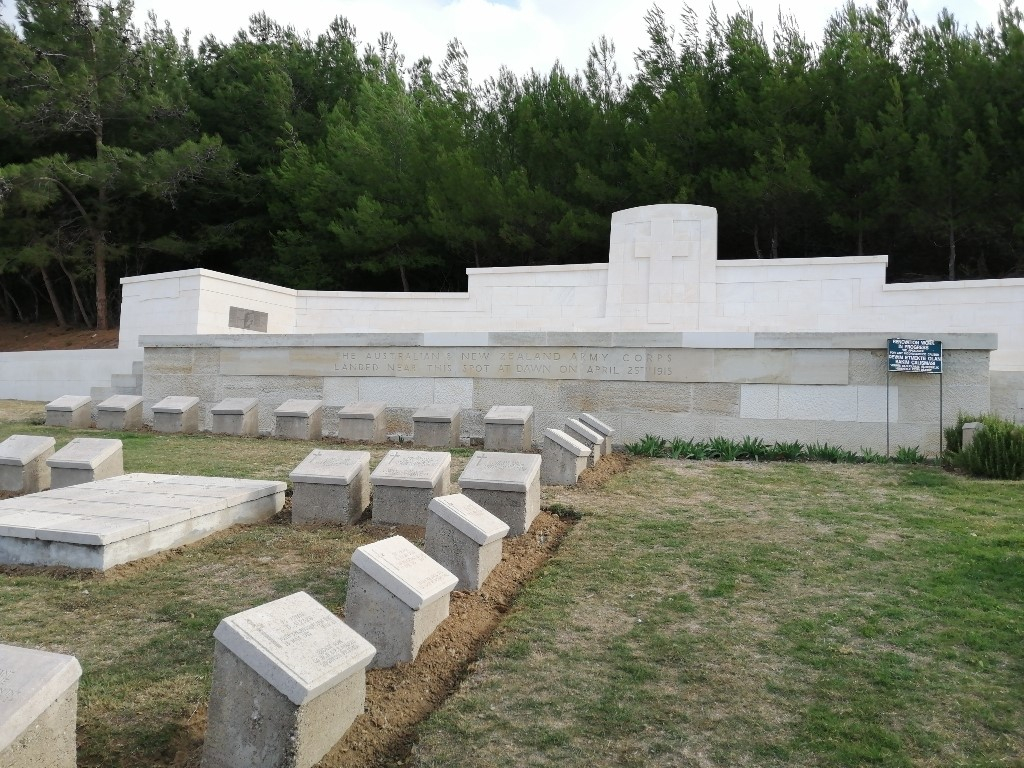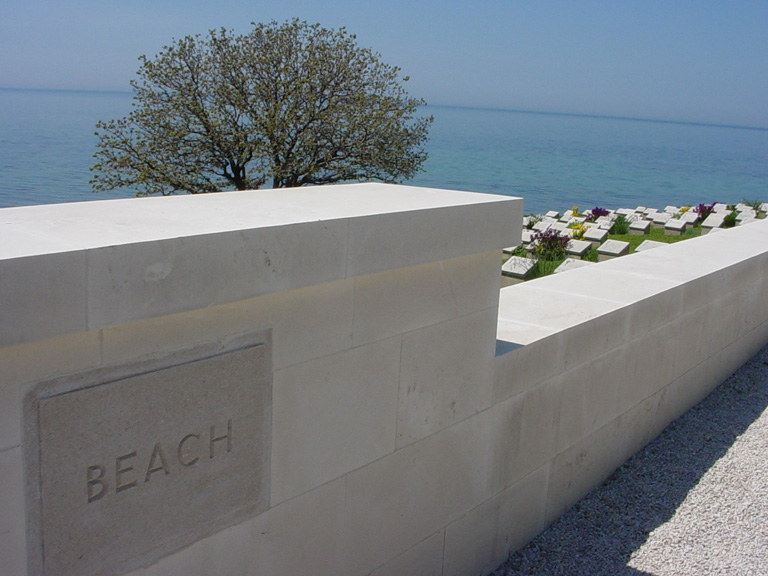Beach Cemetery, Anzac
- Country Turkey (including Gallipoli)
- Total identified casualties 371 Find these casualties
- Identified casualties from First World War
- GPS Coordinates Latitude: 40.23299, Longitude: 26.27639
Location information
The Anzac and Suvla cemeteries are first signposted from the left hand junction of the Eceabat- Bigali road. From this junction travel into the main Anzac area.
At 9.8 kms you will find the cemetery on the left hand side of the coast road. Beach cemetery is situated on what was known as Hell Spit, at the Southern point of Anzac Cove. The graves lie between the Kelia - Suvla Road and the beach.
Visiting information
The Cemetery is permanently open and may be visited at any time. The cemetery is constructed on a very severe slope making wheelchair access impossible.
Please note that in the absence of a cemetery register, visitors are advised to locate the Grave/Memorial reference before visiting. This information can be found in the CASUALTY RECORDS within this page.
For further information and enquiries please contact enquiries@cwgc.org
History information
The eight month campaign in Gallipoli was fought by Commonwealth and French forces in an attempt to force Turkey out of the war, to relieve the deadlock of the Western Front in France and Belgium, and to open a supply route to Russia through the Dardanelles and the Black Sea.
The Allies landed on the peninsula on 25-26 April 1915; the 29th Division at Cape Helles in the south and the Australian and New Zealand Corps north of Gaba Tepe on the west coast, an area soon known as Anzac.
Beach Cemetery was used from the day of the landing at Anzac, almost until the evacuation. There are 391 Commonwealth servicemen of the First World War buried or commemorated in the cemetery. Special memorials commemorate 11 casualties believed to be buried among them. 22 of the burials are unidentified.






